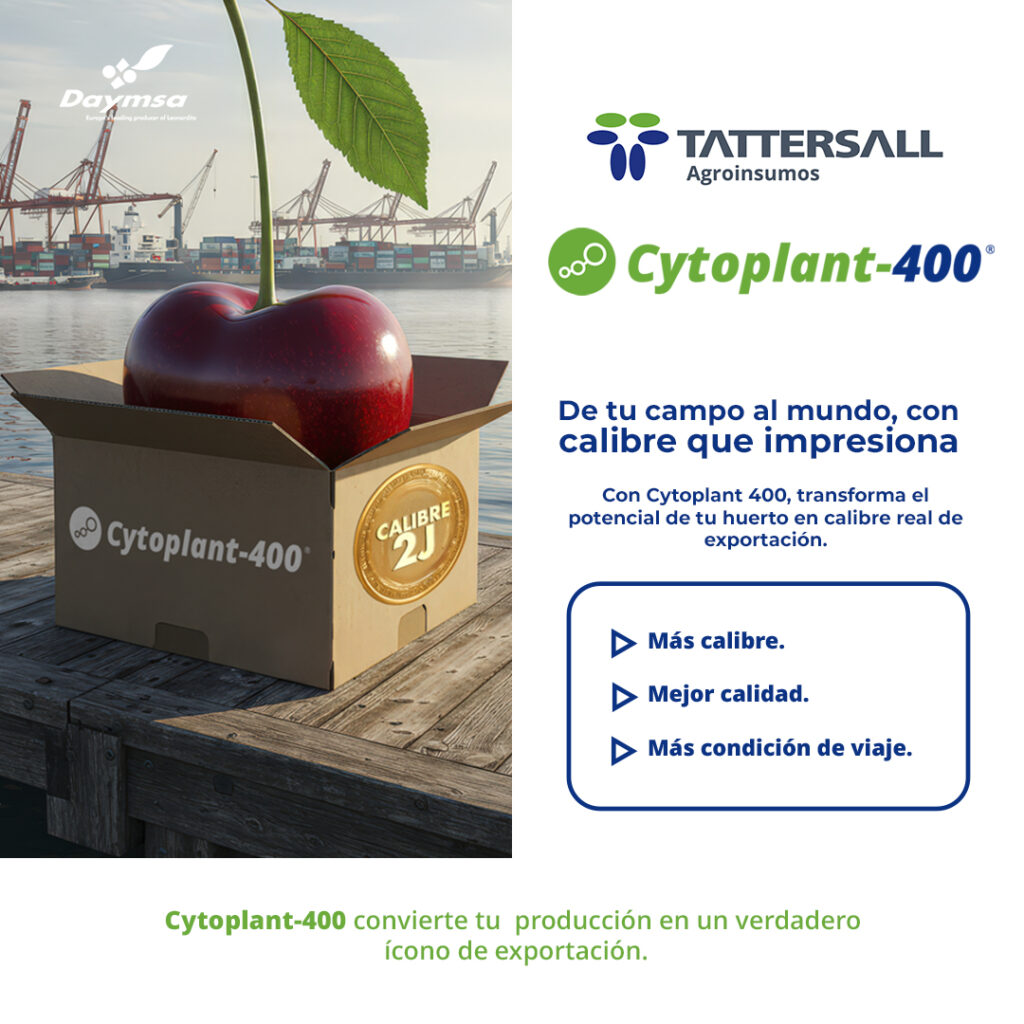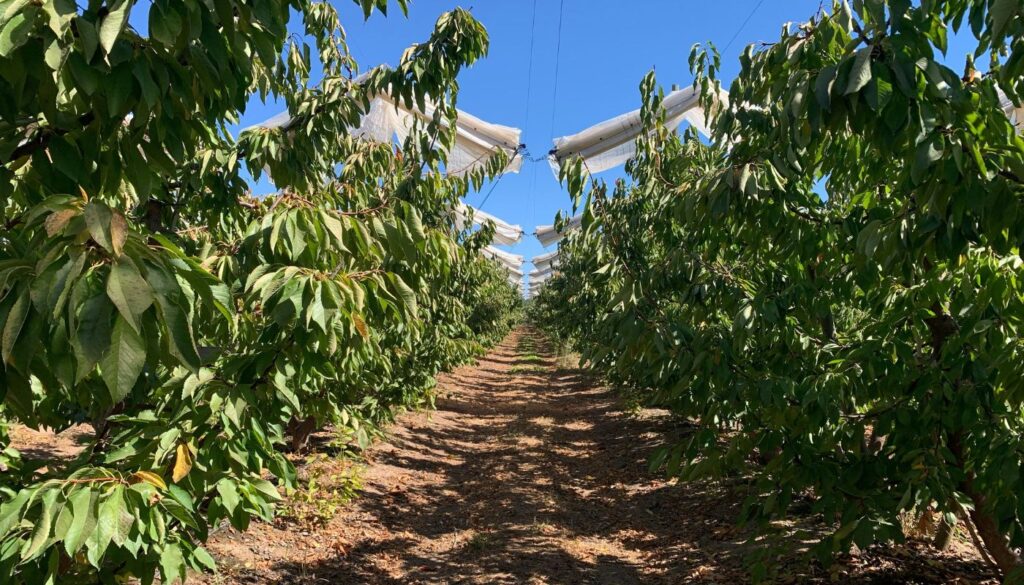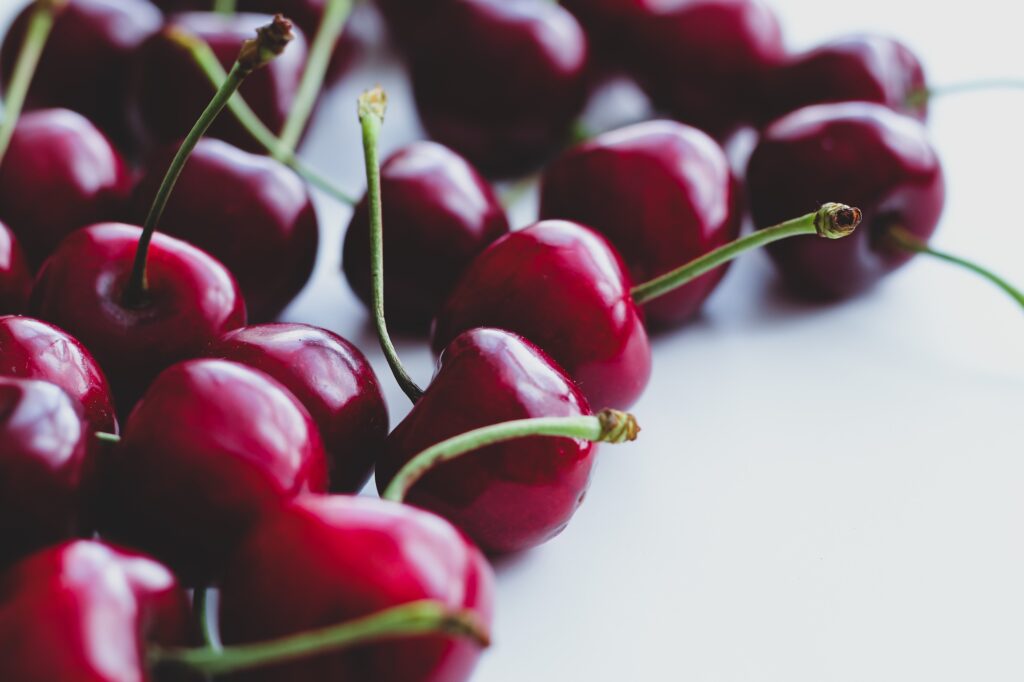The moisture retention capacity of a soil depends mainly on its physical properties. These are undoubtedly the most limiting factors in a cherry tree project, and for this reason, proper soil preparation is of utmost importance to ensure the success of said project.
Looking in detail, what do we mean by “physical properties of soil”? We must first define that soil has three phases: solid, liquid and gas. Combining the liquid and gas phases gives us the “porosity” of the soil.
Soil porosity is the ratio of pore volume (liquid and gas phase) to total soil volume:

Porosity varies depending on the texture and structure of the soil. In simple terms, it corresponds to the ponding capacity, that is, the capacity to retain moisture. Sandy soils have a lower capacity to retain moisture, which is completely opposite to what happens with clay soils.
Soil texture refers to the size distribution of the particles that make up the soil. Clay soils have significantly smaller particles compared to loam or sandy soils. At the same time, they have a greater number of micropores, so that the pore space is greater as well as its ponding capacity.
This is how clayey loam soils retain moisture more strongly because, as they are smaller particles, the specific surface that is in contact with water is greater. As a result, the matrix tension required to release the water retained in clayey soils is considerably greater compared to soils with larger particles, such as loam or sandy soils.
Now, if we apply these concepts to the events that occurred during the 2023-2024 season, soils with a greater capacity to retain moisture saw their productive potential limited. What happened?
Heavy rainfall events in late August and even during September saturated the soil pore space with water, leaving the roots in hypoxic or even anoxious conditions in the initial phenological states, that is, with little or no oxygen available in the pore fraction.
Roots require temperature, water and oxygen to grow. When any of these elements are diminished or absent, certain visible symptoms appear, such as poor sprouting/flowering, vegetative development and even sudden death. This leads to a decrease in the productive potential of the current and future orchard.
Under normal circumstances, roots have enough oxygen to be able to carry out the process of aerobic respiration when the proportions in the composition of the soil are maintained, with respect to the water and oxygen that occupy the pores. However, on certain occasions we can see how plants are affected when we find soils that are poorly drained, with excess irrigation, high rainfall in a short period of time and floods.
We can find two situations when the above occurs: a decrease in the amount of oxygen present in the soil pores known as hypoxia and the total absence of oxygen called anoxia.
When soil and ambient temperatures remain low during the winter break, the effects of the partial or total absence of oxygen in the soil are not seen with easily identifiable visual symptoms, but rather they are seen when the plant begins to be naturally or artificially stimulated to “awake” and begins the process of coming out of dormancy, which is accompanied by flowering/budding. It is at this stage where we could visually appreciate some notable effects, such as uneven flowering and budding, increased symptoms due to the presence of bacteria or fungi, all due to the weakening that has occurred to the plant by affecting the root system partially or totally due to lack of oxygen.
A clear effect of the decrease in oxygen at the root level is being able to observe how the root cuticle, which is the external protective layer that it has, is affected, evidencing at first a detachment of it. As time goes by in which they are subjected to excess water and lack of oxygen, we can see how the root becomes necrotic until a process of decomposition begins.








